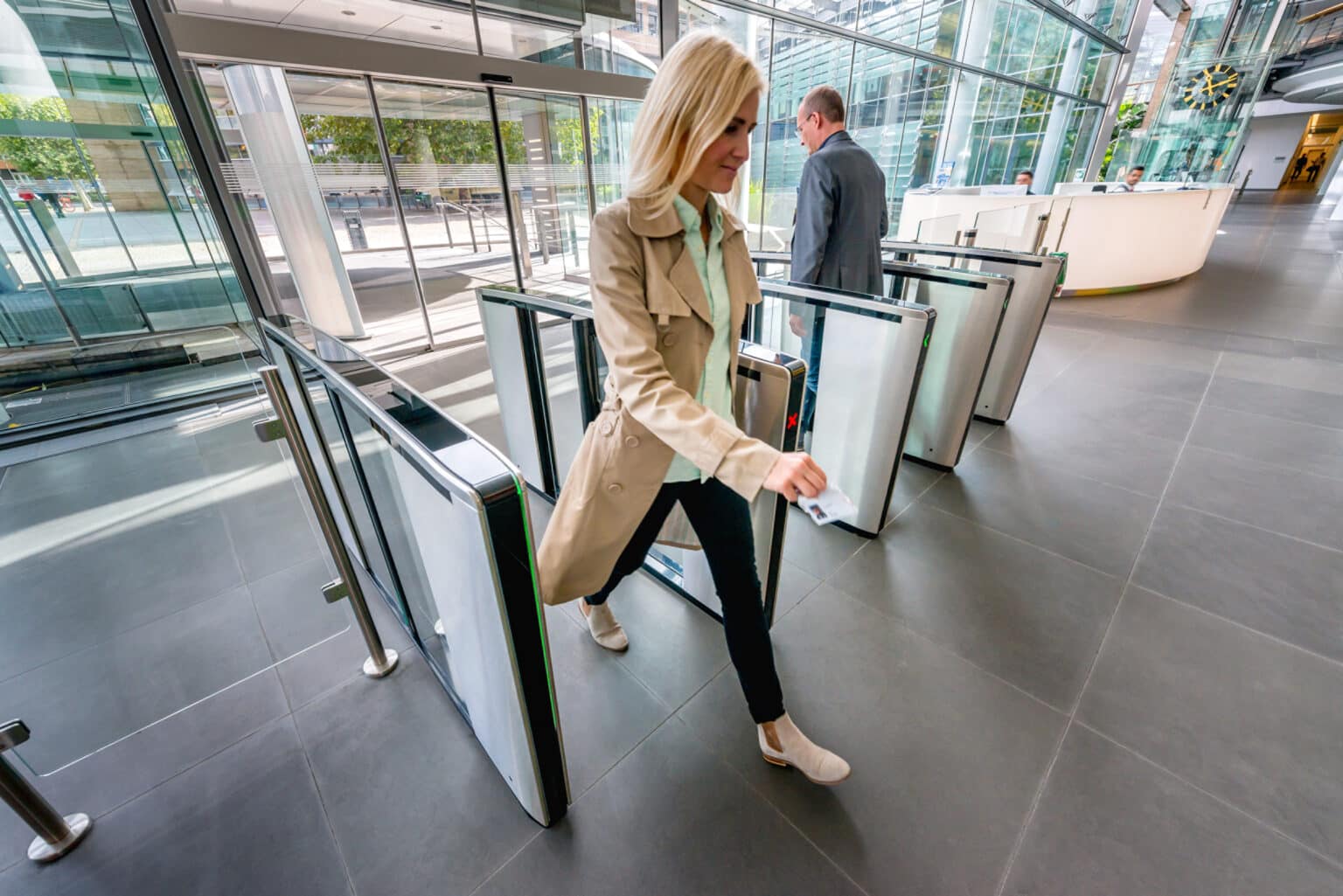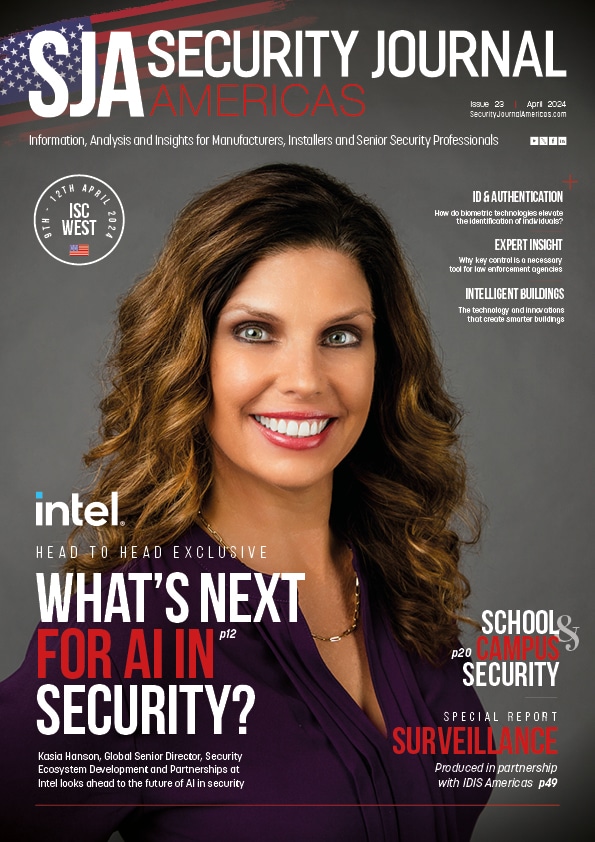EXCLUSIVE: The new landscape for secured entry solutions


Victoria Rees
Share this content
New and emerging threats have increased the necessity for more robust and effective entry solutions, says Valerie Currin, President and Managing Director, Boon Edam Inc.
Fortunately, new and improved secured entry technologies are available to help prevent security breaches, reducing potential liabilities associated with both physical and cyber threats.
As the list of potential threats grows longer and includes events that can happen faster and be far more dangerous – active shooters, workplace violence, terrorist incidents and cyber-attacks – new risks pose real threats, not just to short-term profitability, but for long-term business continuity.
If an organization neglects to take reasonable precautions against such incidents, then it could be held liable for the resulting damages, leading to crippling liability judgments, loss of reputation, work interruptions and even the removal of the leadership team. Additionally, C-suite executives can also be subject to civil liability for intentional or grossly negligent non-compliance for illegal or noncompliant activities, even without direct knowledge of such events.
Layering security entrances and sensor technologies provides the best way to maintain the level of throughput specific users need, while establishing high levels of physical access at critical entry/egress points. Consequently, there are security entrance solutions that work well at attended entrances to help best manage traffic flow and effectively deter and detect unauthorized access. And there are field-proven solutions designed to help prevent unauthorized access at unattended entrances, which has become more of an imperative with hybrid work schedules resulting from the ongoing pandemic.
A subsidiary of Boon Edam Global, a 149- year-old Dutch company that has been in the revolving door business for 119 years, Boon Edam USA is primarily focused on providing best-in-class secured entry solutions, including security revolving doors, mantrap portals, optical turnstiles, full height turnstiles and waist height turnstiles and gates. These solutions facilitate a wide range of outcomes; some serve to slow or funnel users to assist guards at attended entrances, while others provide a visual barrier to help deter breach attempts. And then there are security entrances that are designed to stop unauthorized entry completely.
Physical and Cyber Security Risk Mitigation
Concurrent with the increased risk of physical violence, cyber-attacks and now the spread of infectious contagions, the demand for new and more stringent regulations continues to impact organizations across the country. A perfect example is the passing of Homeland Security legislation to protect critical infrastructure including industries such as manufacturing, energy, transportation, technology, etc., as well as numerous state-wide and local compliance mandates developed to help combat the spread of the pandemic.
As a result, identifying new potential threats at the entry point is as important as preventing a criminal or hacker from gaining access to any facility. All facility entrances must be considered a critical component in a holistic security solution. Stopping bad actors from gaining access is essential in helping to mitigate risk and avoid the resulting potential liabilities.
A proactive solution to prevent threats
Surveys have documented that that the top four threats to an organization’s reputation and brand include workplace violence, an active shooter, terrorism and even cybersecurity. All of which are exacerbated by the ability of a physical intruder to gain access to the interior of a building. Security entrances are the only proactive solution that address the risk of unauthorized physical entry through the common practices of tailgating and piggybacking.
Tailgating is perhaps the most common of all physical security entry breaches given the simplicity and often unintended nature of its execution. An employee presents credentials at a swing door, opens it and politely allows another person to enter. This basic social engineering scenario exposes a facility to undocumented and unauthorized entry by potentially dangerous individuals. By design, security entrances take the pressure off employees by providing a range of tailgating mitigation assurance levels, from guard assistance all the way up to very high security levels that are effective even when unstaffed.
The second most frequented security offense at facility entry points involves piggybacking, which typically involves the collusion of two individuals attempting to pass through a security entrance at the same time using only one authorized credential. While tailgating and piggybacking are often used synonymously, they are different when referring to security entrances. High security doors work to combat collusive piggybacking using a sophisticated overhead sensor system that can detect when more than one person is inside a compartment designed for one.
Organizations need to develop a strategic security prevention and response framework across their entire enterprise to effectively manage potential security breaches. The process begins by identifying and assessing various security-related risk, followed by the development of an effective mitigation plan. An important element of the plan involves assigning ownership of specific tasks related to identified threats. By developing a well-conceived plan, organizations are better positioned to quickly identify and remediate risks to help prevent and limit potential damages.
Security entrance selection guidelines
The deployment of physical security entrances is proven to be the most effective solution in preventing and mitigating threats and risks to an organization. There are several styles of security entrances available, each designed with a specific purpose and level of protection including: security mantrap portals, security revolving doors, speed gates, full height and tripod turnstiles. To help assist in selecting the right entrance solution, security entrances can be classified into three simple classifications:
- Prevent tailgating and piggybacking
- Deter by monitoring or controlling traffic
Security entrances that Prevent tailgating and piggybacking allow for the elimination or reallocation of guard supervision, providing security and facility managers with tangible ROI. These solutions include revolving doors and mantrap portals, which are virtually impenetrable and prevent unauthorized intrusion. Also, by collecting metrics gathered by sensor systems in these solutions, security personnel can predict and quantify their actual risk of infiltration. Used often at employee-only entrances and to secure areas containing sensitive data or personnel, these solutions are a breed of security entrances unlike any other.
The data collected using overhead sensor systems in security entrances designed to Prevent and Detect threats can be used as a great new source of business intelligence. The intelligence provided from these devices can help forecast and quantify an organization’s risk of infiltration and threat. Typically deployed at employee entrances and other sensitive areas within a facility, sensors further elevate the effectiveness and efficiency of security entrances as an enterprise level solution.
Security entrances designed to Deter unauthorized access cannot stop a piggybacking incident from happening on their own and ideally require manned supervision for proper monitoring. The cost of supervision should be factored into the annual budget as a necessary expense. If an organization deploys an entrance that requires supervision and elects not to employ personnel to monitor the access point, management could be held liable if an event occurs as a result of their inaction.
Logistics and Distribution centers are vital to the economic prosperity of the US supply chain. Controlling access to keys, goods and other valuable items can successfully be accomplished through established, integrated and reliable security entrance solutions. A Fortune 500 logistics customer identified several key areas for security entrances across their facilities.
Specific zones of protection include: the perimeter of the building, protected by full height turnstiles; initial entry points to buildings, secured using full height turnstiles supplemented by metal detectors and supervised by guard personnel; end of shift exit areas, employing waist-high turnstiles monitored by security personnel; and interior spaces divided by manual revolving doors with opaque doors and panels to eliminate line of sight into executive and high security areas.
Data Centers have their own set of specific needs and challenges, including compliance and customers’ and other technical personnel’s speed of access to servers. To comply with current regulations such as HIPPA, PCI DSS, FISMA and Sarbanes-Oxley while retaining access and security, protection at the rack level is essential. Here, the use of revolving doors and portals, often referred to as mantraps, provide a strong preventive security measure.
When integrated with biometrics such as facial recognition or fingerprint readers, data center operators can realize high ROI by eliminating the need for security personnel supervision, given the ability of biometrics to accurately identify and authenticate individuals without using physical credentials that can be easily lost, stolen or duplicated.
Banking and Financial institutions also face challenges related to fast and easy customer throughput while maintaining high levels of security and compliance. Here, security revolving doors can effectively prevent all instances of tailgating and piggybacking into protected areas within a facility, while facilitating two-way traffic. For areas with access to vaults and safe deposit boxes, mantrap portals prevent all forms of tailgating and piggybacking to protect people and assets from threats.
Healthcare facilities experience extremely high volumes of pedestrian traffic throughout the course of the day, every day of the week. The type of individuals entering healthcare facilities falls into one of three general categories: staff, patients and visitors. To best accommodate and manage pedestrian traffic, healthcare facilities typically employ separate entrances for staff, patients and visitors using a combination of security entrances including, revolving doors for high volume areas like employee entrances, optical turnstiles to manage the flow of access into general visitor and outpatient areas and mantrap portals to prevent access to high security areas such as operating rooms, nurseries and areas where valuable equipment or pharmaceuticals are stored.
Partner for success
Regardless of the facility type or application, it’s imperative to partner with a highly experienced and proven security entrance specialist to ensure that you select the most appropriate solution for each location within your facility. The quality and reliability of each security entrance is also an imperative. At Boon Edam USA, we pride ourselves on offering the highest quality security entrance solutions and support available.
The reason our customers choose to work with us is that we have proven ourselves to be different. In a world full of merely average products, which all blend in together to look and feel the same – we pride ourselves in offering more. This value that we add to our already premium selection of entry solutions is the difference we know our partners are looking for.
More than just a corporate culture, this is the “Boon Edam Experience” we aim to deliver to every customer and partner.
For more information, visit: www.boonedam.com
This article was originally published in the October edition of Security Journal Americas. To read your FREE digital edition, click here.


